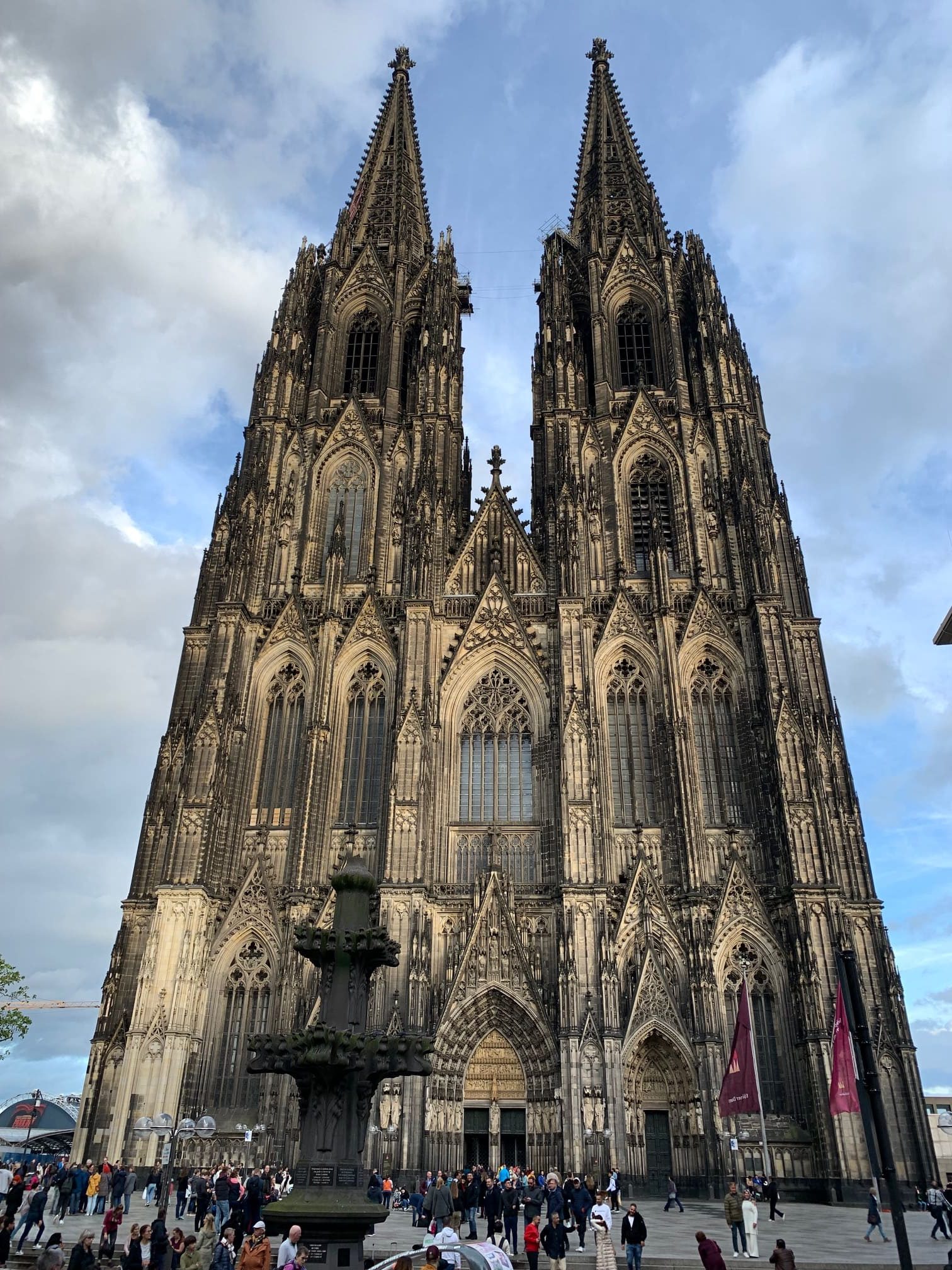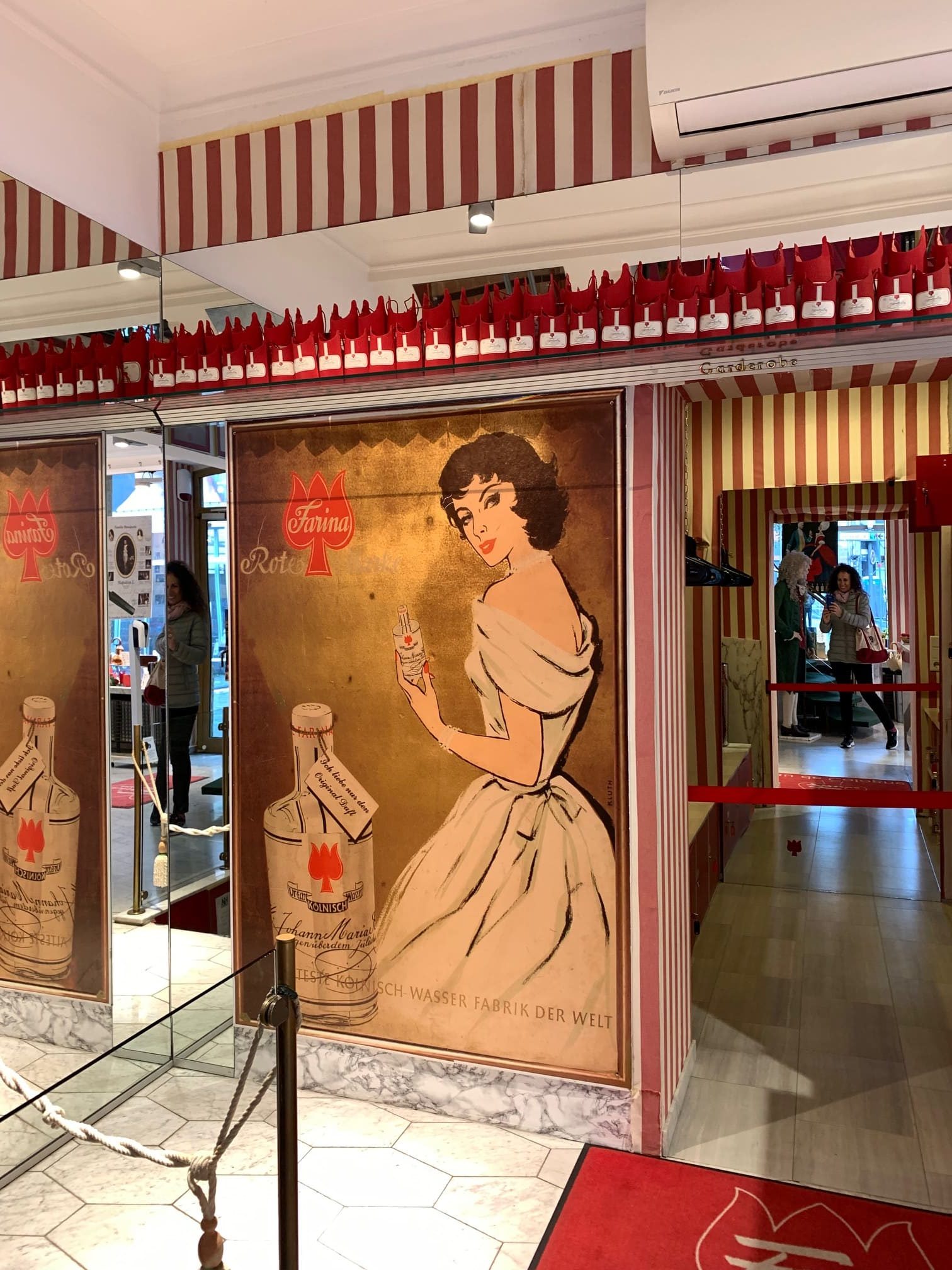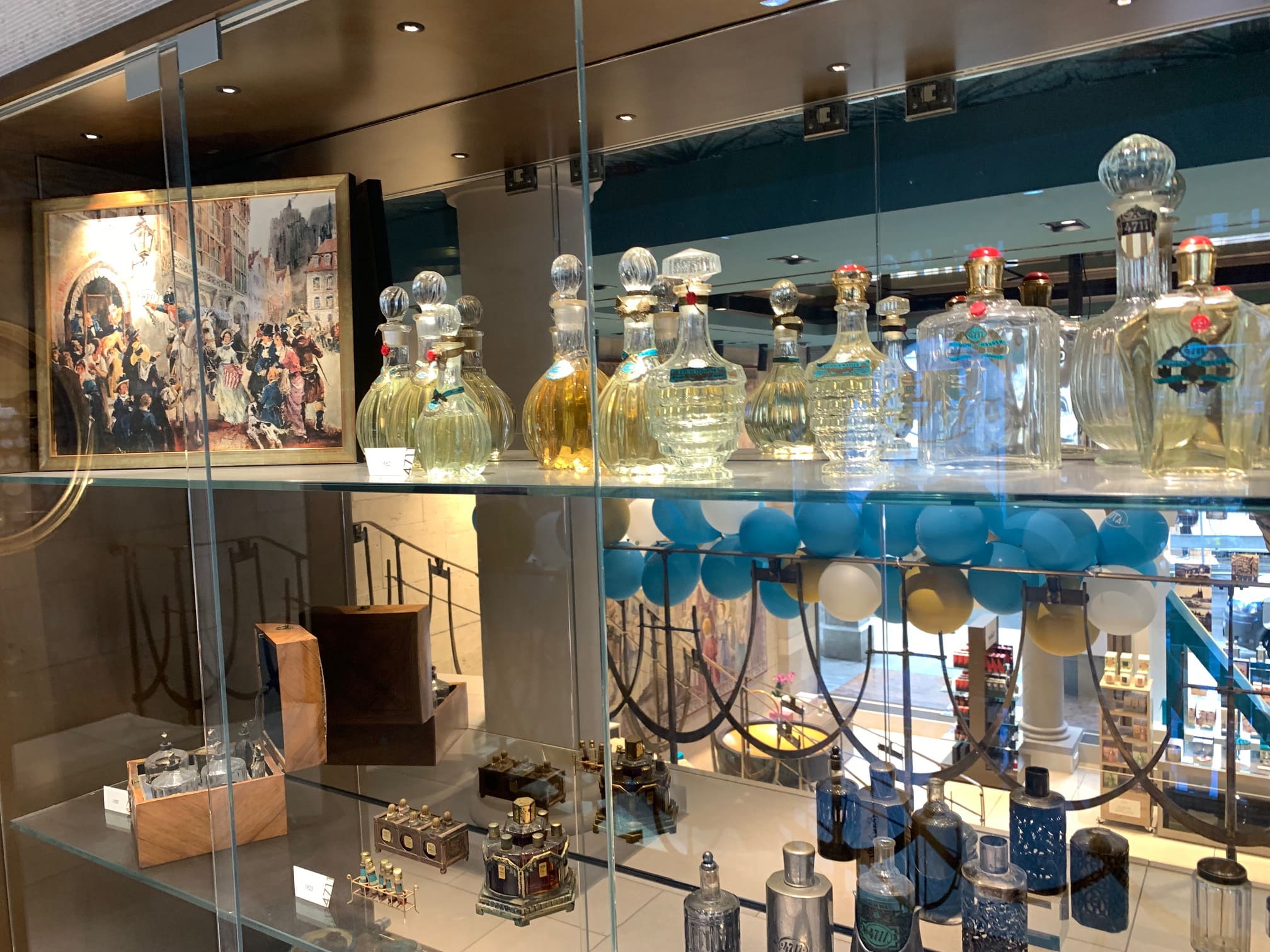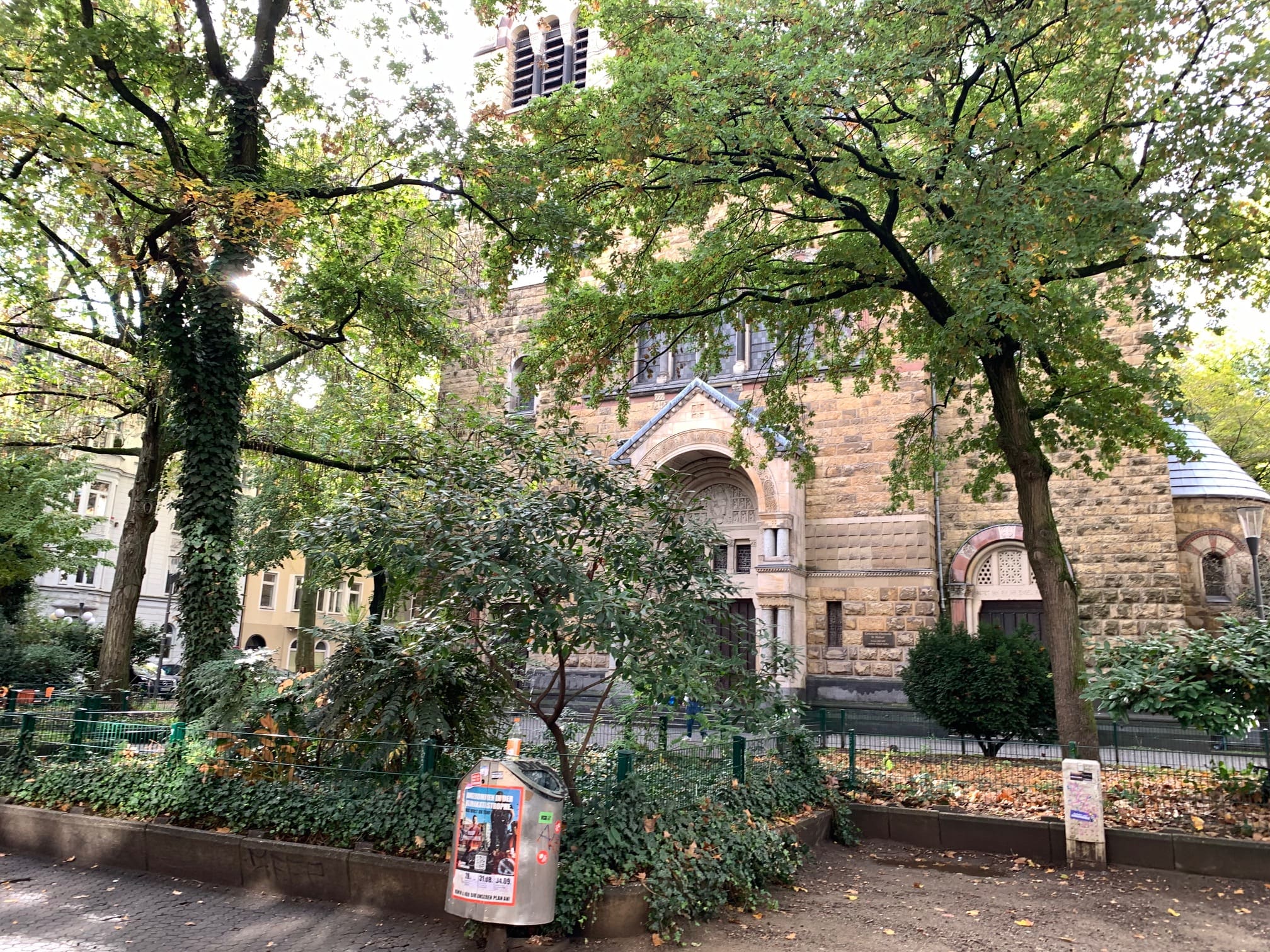
Today is my first visit to Cologne. I take the train from Bad Honnef. I love to travel by rail, I find it very romantic, I can read while I arrive at my destination. Cologne’s central station “Hauptbahnhof” is next to the Cathedral, not ideal, but convenient.
There she is, the iconic Cathedral “Köln Dom”, tall and dark, recognizable from anywhere in the city. They have hung old photos on its walls of what the surroundings looked like after the war. I want to visit it inside, so I get in line to enter, it’s free, but these are days with covid rules still in force. I drink my hot tea that Alba has prepared for me while I wait.

The temple is beautiful, they started its construction in 1248 and finished in 1880, they like to do things well. It was built to preserve the relics of the Three Magic Kings. There is a side entrance that gives access to the 533 steps that take me to one of its needles to see the city from above.

On my return in October I walk to the places I have marked on my map and those that cross my path. It rains and I think maybe I should look for a coffee shop, but no, one moment it rains and the next the sun rises, typical of Cologne, tells me the clerk of the Farina Perfume Museum with whom I chat.

This museum was inaugurated in 1709 by this Italian gentleman when he created a fragrance, which he called Eau de Cologne in honor of the city that welcomed him and made it famous throughout the world. It is the oldest in the world still active. To visit it you must book a tour, and that day there was none in English or Spanish.
Nearby is another famous and beautiful perfume shop, in 1792 the fragrance 4711 was created from a recipe given by a Carthusian monk to the perfumer Muelhens. I remember that as a child I had a little bottle with which I used to play with.

I go to the river and pass through the central Alter Markt square where they place a large Christmas market with an ice rink included, but today I can admire it without any “distractions”.
I love the little streets of the Altstadt that lead to the Fish market (Fischmarkt) and the typical breweries.
In front of the promenade are the colorful little houses that I call “the painted ladies of Cologne” like those of San Francisco. Behind them is the church of San Martín.

I walk along the Rhine, from this perspective I see how the old Cologne merges with the new one when I observe the Ludwig Museum and the Cathedral next to each other. I try to pronounce the name of its emblematic bridge (Hohenzollernbrücke) while I record stories for social media, I cross it slowly looking at all the love locks that are hanging there, some don’t kid and choose them very big. The view from the other side is the glorious skyline.

Towards the opposite side of the bridge is the Chocolate Museum. I am glad that someone created a museum for this delicacy, it is not the first one I visit and I assure you that it will not be the last. First I seat in their spacious cafeteria overlooking the river to drink a hot chocolate, but they do not do it with vegetable milk, so I have a piece of exquisite cake (tiny portion though) and a mint tea, which, by the way, is prepared with fresh mint leaves, not with sachets, I think it is a German custom, for what I see, and I like it a lot.

Near the museum, facing the Rhine are the three inverted L-shaped buildings that simulate the old harbour cranes; the middle one won an architecture prize in 2009.

I go into the streets, some of the buildings show a mixture of the old, partially destroyed, and the new. The reconstruction after the war had to be fast, hunger and cold are not good companions.
There’s a building that emulates a whale, it`s the shopping center Welt Stadth, located in a popular shopping street.

Rudolph Square is one of the main squares in the city, in its center has a medieval gate that recalls its ancient walls. On my walk around there I find very beautiful and colorful streets and buildings.

I arrive at Brussels Square which is the center of the Belgian quarter, an area strewn with urban art, neoclassical buildings, shops and restaurants ideal to get lost at any time of the day.

It is time to get back to the station, take the train and continue reading “The Illiterate”, a short story in which Agota Kristof narrates her life, how she fled Hungary in 1956 to end up exiled in Switzerland, and that despite her love for books and having been an avid reader from a very young age she felt like an illiterate because she could not read in French.The exile, not being able to write because of ignorance of the language, the emptiness left by uprooting, and reading and writing as a healing therapy make it a wonderful work that can be read on a train ride that takes us home.



